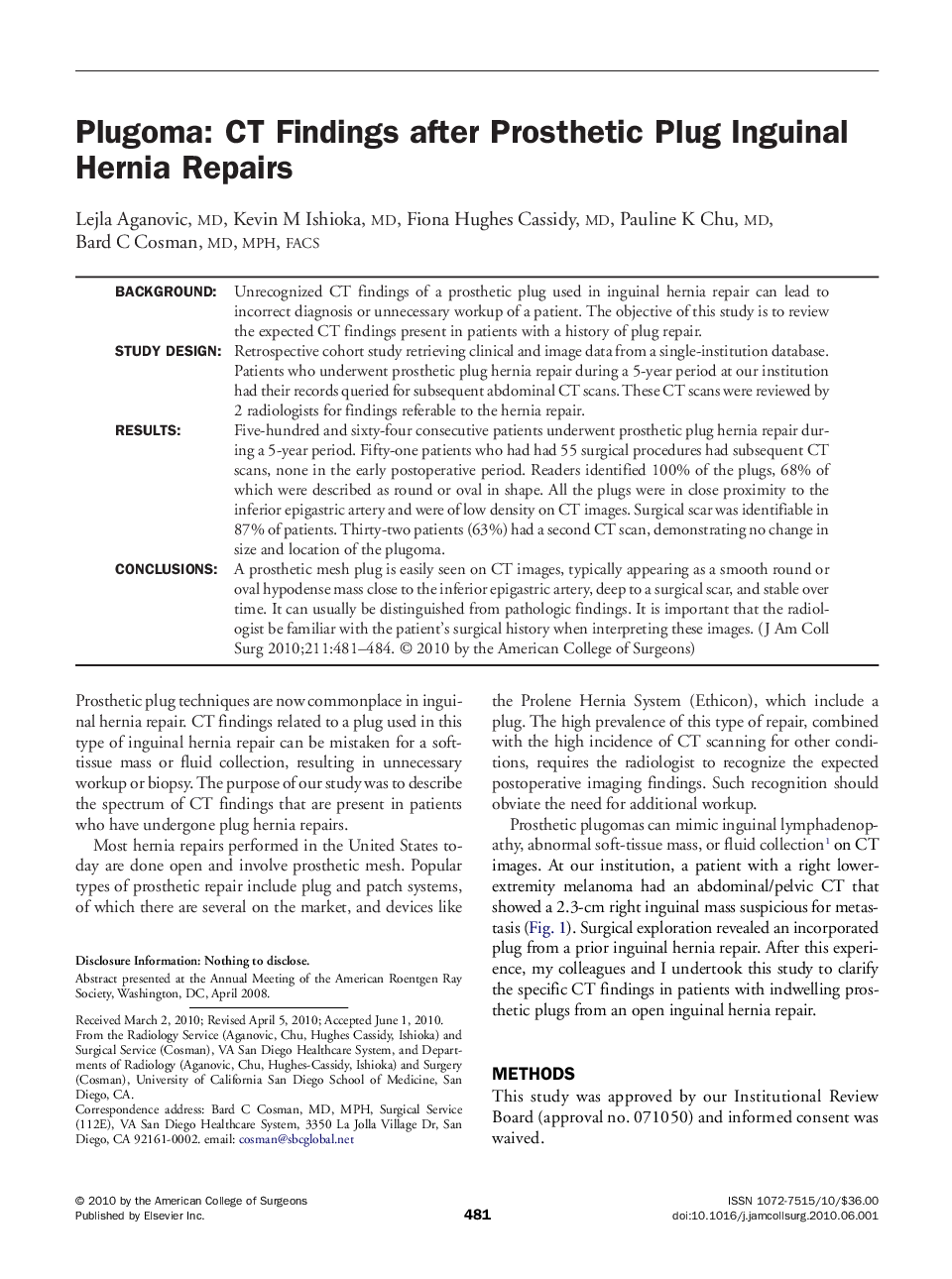| Article ID | Journal | Published Year | Pages | File Type |
|---|---|---|---|---|
| 4293723 | Journal of the American College of Surgeons | 2010 | 4 Pages |
BackgroundUnrecognized CT findings of a prosthetic plug used in inguinal hernia repair can lead to incorrect diagnosis or unnecessary workup of a patient. The objective of this study is to review the expected CT findings present in patients with a history of plug repair.Study DesignRetrospective cohort study retrieving clinical and image data from a single-institution database. Patients who underwent prosthetic plug hernia repair during a 5-year period at our institution had their records queried for subsequent abdominal CT scans. These CT scans were reviewed by 2 radiologists for findings referable to the hernia repair.ResultsFive-hundred and sixty-four consecutive patients underwent prosthetic plug hernia repair during a 5-year period. Fifty-one patients who had had 55 surgical procedures had subsequent CT scans, none in the early postoperative period. Readers identified 100% of the plugs, 68% of which were described as round or oval in shape. All the plugs were in close proximity to the inferior epigastric artery and were of low density on CT images. Surgical scar was identifiable in 87% of patients. Thirty-two patients (63%) had a second CT scan, demonstrating no change in size and location of the plugoma.ConclusionsA prosthetic mesh plug is easily seen on CT images, typically appearing as a smooth round or oval hypodense mass close to the inferior epigastric artery, deep to a surgical scar, and stable over time. It can usually be distinguished from pathologic findings. It is important that the radiologist be familiar with the patient's surgical history when interpreting these images.
